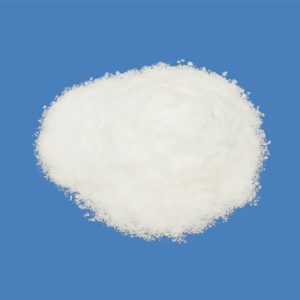

Sodium Hexametaphosphate (SHMP) is a versatile chemical used in a wide range of industries — from food processing to water treatment. However, not all SHMP is created equal. It’s crucial to understand the distinction between food grade SHMP et industrial grade SHMP, especially when your application directly impacts consumer health or product safety.
In this post, we’ll break down the differences, explain how to identify each grade, and help you make the right choice for your needs.
Contents
- 1 What Is SHMP (Sodium Hexametaphosphate)?
- 2 Food Grade Sodium Hexametaphosphate: Safe for Consumption
- 3 Industrial Grade Sodium Hexametaphosphate: For Non-Food Applications
- 4 How to Differentiate Between Food Grade and Industrial Grade SHMP
- 5 Choosing the Right SHMP(Sodium Hexametaphosphate): What to Consider
- 6 Final Thoughts
What Is SHMP (Sodium Hexametaphosphate)?
SHMP (Na₆P₆O₁₈) is a polyphosphate compound widely used for its sequestrant, dispersing, and emulsifying properties. It appears as a white, odorless powder or granule and is highly soluble in water.
Food Grade Sodium Hexametaphosphate: Safe for Consumption
Applications:
- Food and beverage processing
- Meat and seafood preservation
- Dairy products
- Beverages (as a stabilizer)
- Water softening for food production
Key Characteristics:
- High purity (typically > 95%)
- Low heavy metal content (lead, arsenic, etc.)
- Strict adherence to food safety standards (such as FDA, EU, or GB regulations)
- Regularly tested for contaminants and microbiological safety
Labeling:
- Usually marked “food grade” or “FCC” (Food Chemicals Codex)
- Comes with certificates of analysis and safety data sheets confirming its compliance with food-grade standards
Industrial Grade Sodium Hexametaphosphate: For Non-Food Applications
Applications:
- Water treatment
- Oil drilling
- Detergents and cleaning agents
- Ceramic and textile processing
- Paper manufacturing
Key Characteristics:
- Lower purity than food grade (typically around 60–90%)
- May contain higher levels of heavy metals and impurities
- Not safe for human consumption
- Designed for cost-effectiveness and industrial efficiency, not food safety
Labeling:
- Labeled as “industrial grade”
- Typically does not include food safety documentation
How to Differentiate Between Food Grade and Industrial Grade SHMP
| Feature | Food Grade | Industrial Grade |
|---|---|---|
| La pureté | >95% | 60–90% |
| Heavy Metals | Strictly regulated (very low) | May have higher concentrations |
| Certification | FCC, FDA, GB standards | May lack certification or be general |
| Packaging | Food-safe materials | Industrial packaging |
| Intended Use | Consumables and food processing | Industrial and technical uses |
| Price | Higher due to purity and compliance | Lower due to less stringent standards |
Choosing the Right SHMP(Sodium Hexametaphosphate): What to Consider
- End Application:
- If your product is consumed or comes into contact with food, only use food grade SHMP.
- For manufacturing or technical purposes, industrial grade is typically sufficient.
- Regulatory Compliance:
- Ensure your SHMP complies with local and international standards based on your industry.
- Supplier Verification:
- Always request a Certificate of Analysis (COA) and verify product labels.
- Work with reputable suppliers that offer clear traceability and documentation.
- Budget and Volume:
- Industrial grade is more economical, but never substitute it in food-related applications to cut costs — safety comes first.
Final Thoughts
Using the wrong grade of SHMP can result in serious health risks or regulatory violations. Knowing the difference between food grade et industrial grade SHMP ensures product safety, quality, and compliance.
When in doubt, ask your supplier for documentation et understand your local regulations. The right grade of SHMP isn’t just a chemical choice — it’s a commitment to safety and quality.
The distinction between food-grade and industrial-grade SHMP is not a mere technicality but a fundamental safety and quality imperative. While both share a common chemical identity, their purity, manufacturing controls, and intended applications diverge significantly. The potential for severe health consequences, stringent legal penalties, and irreparable brand damage underscores the absolute necessity of using the correct grade.
For professionals in food manufacturing and procurement, informed selection is paramount. Always procure SHMP from reputable suppliers with a proven track record in the specific grade required. Insist on a comprehensive, recent, and verifiable Certificate of Analysis (CoA) for every batch, meticulously scrutinizing impurity profiles, especially for heavy metals, arsenic, and fluoride. Prioritize adherence to recognized food safety certifications (e.g., E452i, GRAS, FCC, ISO 22000, HACCP, GMP) when selecting for food applications. Never compromise on quality for cost, as the long-term risks far outweigh any short-term savings. This commitment to ethical sourcing and quality, recognizing the profound impact on consumer well-being, is essential for both consumer safety and business integrity.
Need help Sourcing the right Sodium Hexametaphosphate for your application?
Feel free to reach out! Your safety and product quality are worth it.

References: Sodium hexametaphosphate
Last Updated on 2025-05-31 by system
